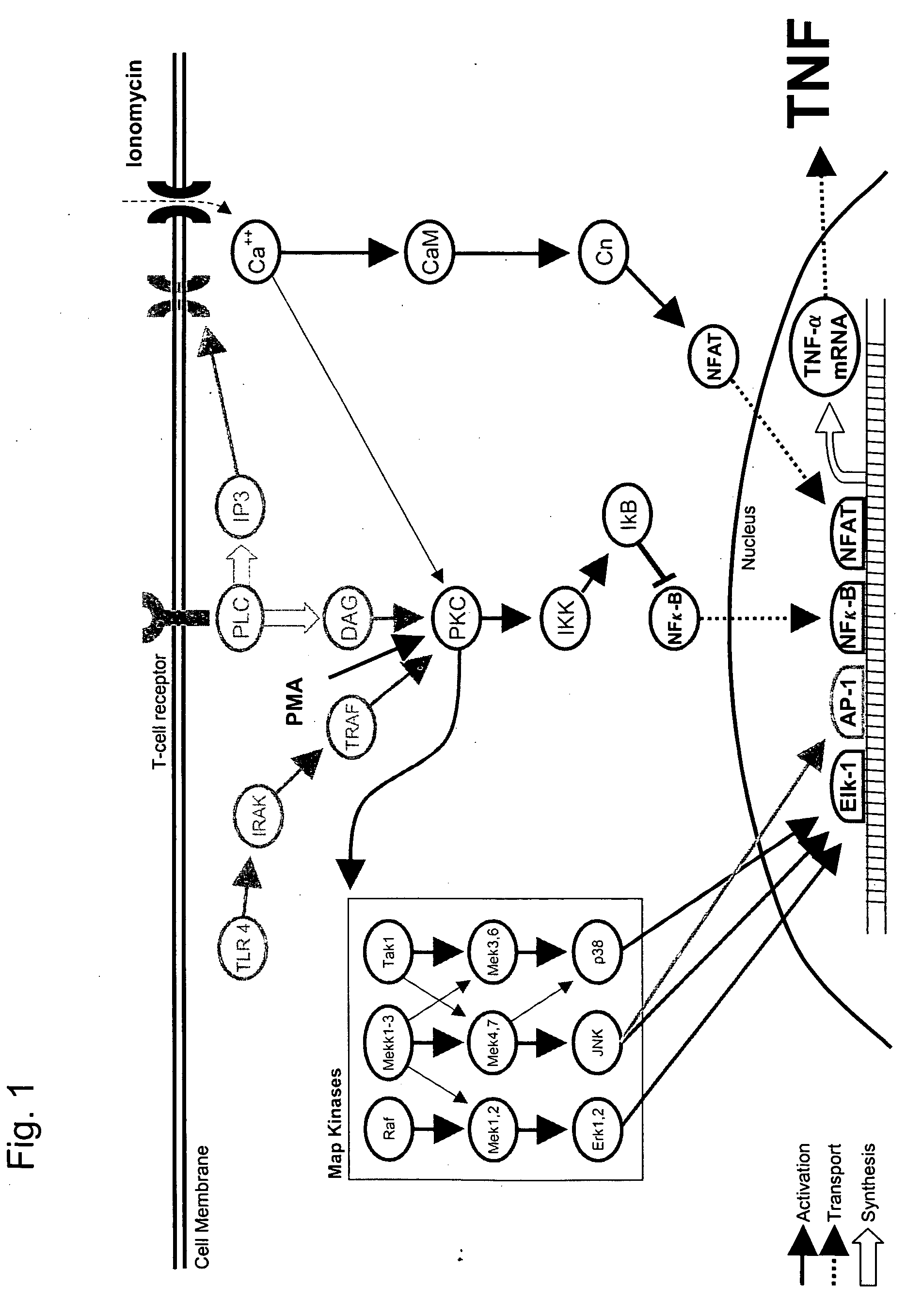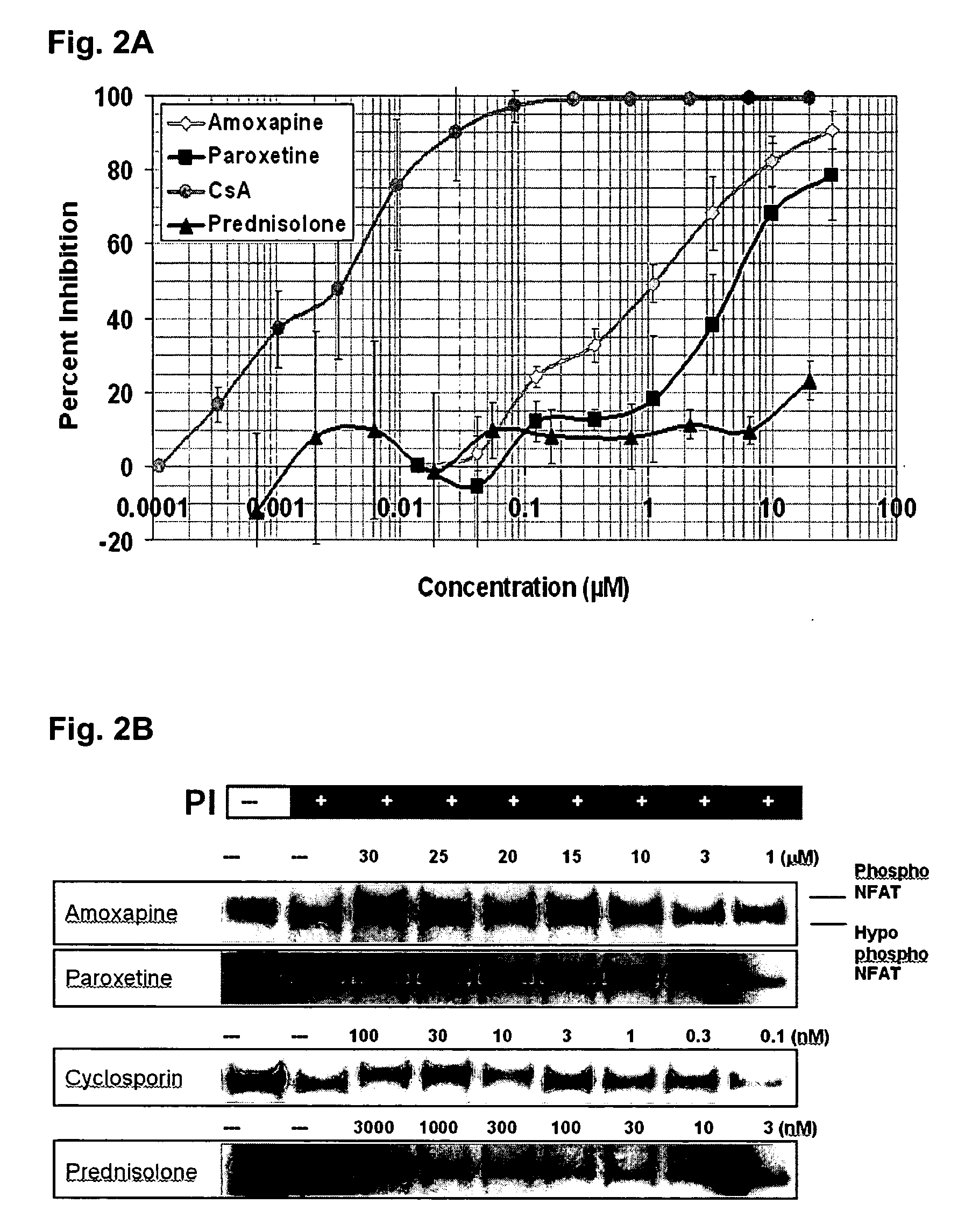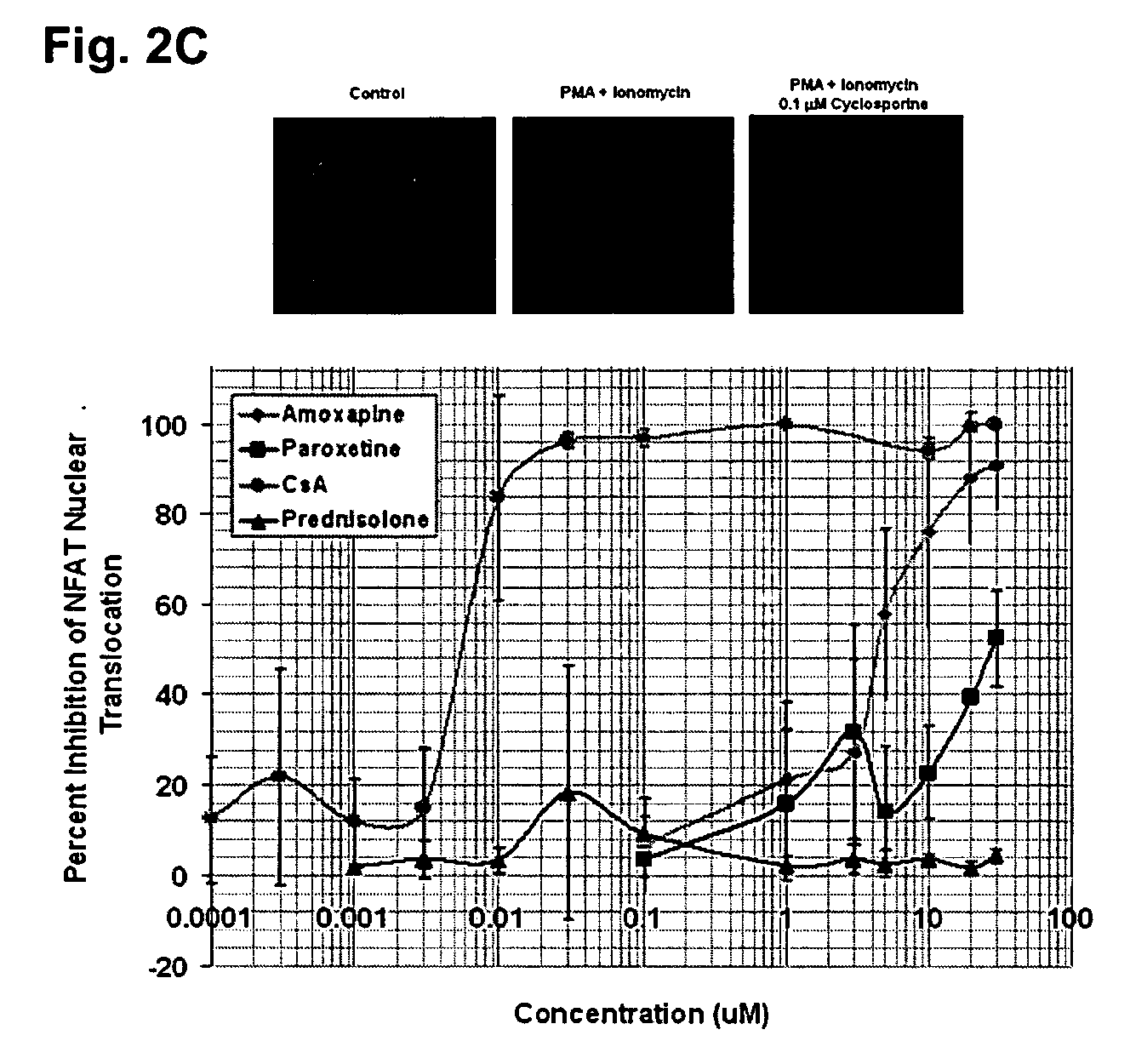Methods and reagents for the treatment of immunoinflammatory disorders
a technology of immunoinflammatory disorders and reagents, applied in the field of immunoinflammatory disorders, can solve the problems of often accompanied by adverse side effects of their use, and achieve the effects of increasing the signaling activity of a glucocorticoid receptor, increasing the expression of effector proteins, and increasing the activity of intracellular signaling molecules
- Summary
- Abstract
- Description
- Claims
- Application Information
AI Technical Summary
Benefits of technology
Problems solved by technology
Method used
Image
Examples
example 1
Parallel Signaling Pathways are Inhibited by Amoxapine and Paroxetine
[0126] Materials and Methods
[0127] Drugs
[0128] Stock solutions were made in DMSO for all drugs except amoxapine which was prepared in 0.1 mM MES (2-(N-morpholinoethanesulfonic acid) (Sigma) buffer. Stock solutions of phorbol myristate acetate (PMA) (100 μg / ml), and ionomycin (5 mg / ml) in DMSO were diluted in the culture media to produce final concentrations of PMA (10 ng / ml, 16.2 nM) and ionomycin (750 μg / ml, 1 μM).
[0129] Cells and Cell Lines
[0130] Fresh buffy coat preparations from donated human blood (Red Cross, Rhode Island) were used to isolate peripheral blood mononuclear cells (PBMCs) by Ficoll-Plaque (Pharmacia) layered centrifugation. T cells were purified from PBMCs using “Pan T cell Isolation Kit II—human”, (Miltenenyibiotec, Germany). A lymphoid leukemia T cell line (CCRF-CEM) was obtained from American Type Cell Culture (ATCC). All cells were grown in RPMI 1640 medium (Cellgro) supplemented with 10...
PUM
| Property | Measurement | Unit |
|---|---|---|
| immunomodulatory disorder | aaaaa | aaaaa |
| disorder | aaaaa | aaaaa |
| immunoinflammatory disorder | aaaaa | aaaaa |
Abstract
Description
Claims
Application Information
 Login to View More
Login to View More - R&D
- Intellectual Property
- Life Sciences
- Materials
- Tech Scout
- Unparalleled Data Quality
- Higher Quality Content
- 60% Fewer Hallucinations
Browse by: Latest US Patents, China's latest patents, Technical Efficacy Thesaurus, Application Domain, Technology Topic, Popular Technical Reports.
© 2025 PatSnap. All rights reserved.Legal|Privacy policy|Modern Slavery Act Transparency Statement|Sitemap|About US| Contact US: help@patsnap.com



